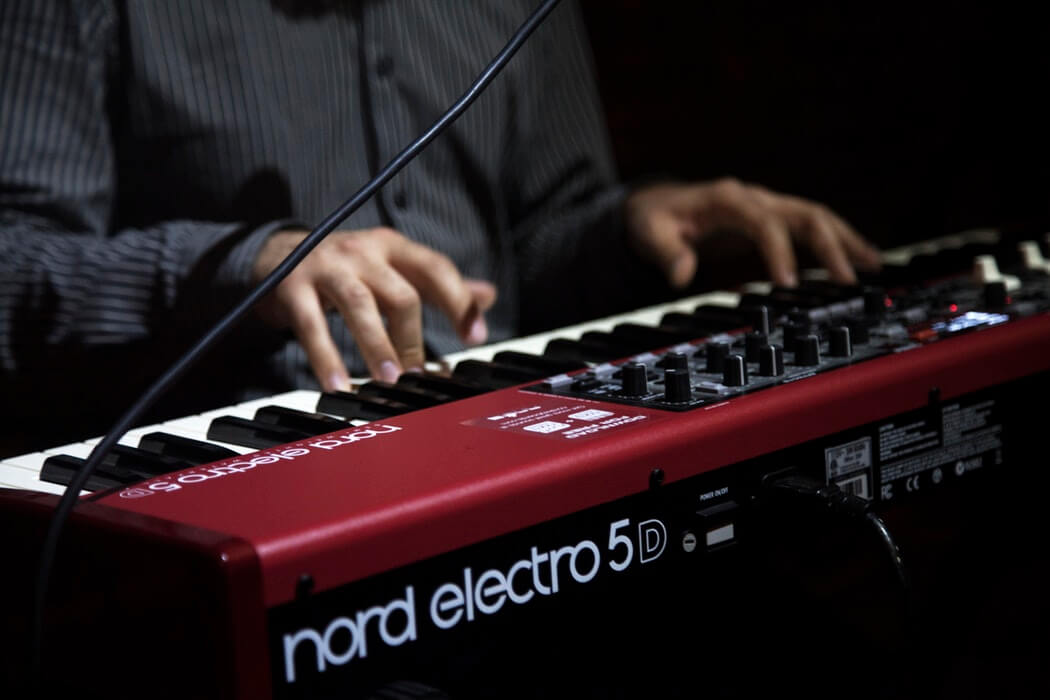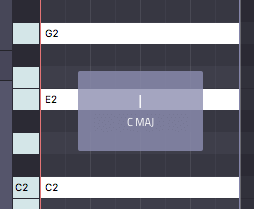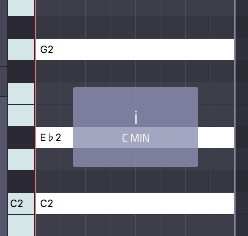Types Of Chords – The Basics

Chords are imperative to creating engaging music that has a sense of emotion. They range from simple three note triads, to more complex variations such as suspended chords. We’ll look at some of the main triad types in detail, but first let’s discuss what constitutes a chord.
In simple terms, a chord in music is a combination of two or more notes that are played simultaneously. Although two notes could be considered a chord, generally three or more notes are required. Notes are often referred to as pitches as they are governed by their frequency, measured in Hertz. Middle C on a piano is tuned to the frequency of 261.6 Hz.
Simple Chords
Let’s leave the science for now and look at what some of the most common or simple chords look like and how they can be used to convey a sense of emotion in music.
The Major Triad
Major triad chords sound happy. They contain a root note, a major third above the root, followed by a perfect fifth, also above the root note.
Here’s what the C Major Triad sounds like:
C MAjor Chord
Played on the piano or keyboard, it looks like this:

Note that the root note is ‘C’, the major 3rd is ‘E’, which is counted by only using the white keys, and the perfect 5th ‘G’ is also counted by the number of white keys from the root note.
The distance, or interval between the notes in a chord or triad is counted using semitones. One semitone is exactly one piano key up or down, regardless if it happens to be a white or black key. Using this method, the Major 3rd is four semitones above the root note and the perfect 5th is seven semitones above the root.
Write chords faster with Captain Chords
- Write your own chord progressions
- Apply rhythms to your chords
- Set your Key and Scale for the entire song
- Explore different chords and discover your favorite combinations
- Compose music and write your own songs
- One touch plays 3 notes of the chords
Pro Tip
You can use this method for calculating all Major Triads; just start with the root note of the chord you want to create, e.g A for A Major, E for E Major and so on.
Songs using mainly Major chords will sound happy and may be considered to give a more uplifting and somewhat pop-music feel. A perfect example of this would be I’ve Got A Feeling by The Beatles, which uses predominantly the A Major and D Major chord throughout.
I’ve Got A Feeling by The Beatles recreated in Captain Chords:
The Minor Triad
Unlike the Major Triad, the Minor Triad sounds sad, tense and melancholic. The Minor Triad is constructed of similar notes to it’s Major counterpart, however the Major 3rd becomes Minor 3rd and is lowered by one semitone.
This makes it easy to calculate the new interval as it is now three semitones from the root note instead of four. This subtle but super-important change is what gives the minor triad a different feel.
Here’s what the C minor triad sounds like:
C Minor Chord

Songs consisting of mainly minor chords will tend to sound more serious or sad. A great example of this would be the modern-day classic, Children by Robert Miles.
Children by Robert Miles recreated in Captain Chords
It’s important to note that almost all songs will contain a mix of Major and Minor chords. This is important as using the two types of chords together creates cadence; the natural sounding harmonic conclusion to a phrase, verse or musical selection.
Major & Minor
In order to find out which Major and minor chords will work well together in a musical arrangement we must first examine the various key & scales.
Want to know more about keys & scales?
Let’s take the key & scale of A minor, it consists of the notes A, B, C, D, E, F and G with no flat or sharp notes. The main chords which fall under this key & scale use only the notes mentioned above.
These are A min, B Dim, C Maj, D min, E min, F Maj and G Maj. Any combination of these chords in a song will work well together harmonically.
Here’s a example of building a chord progression in A minor using a mix of both Major and minor chords. By using both Major and minor chords together it allows the progression to come to a pleasant and natural conclusion.
Try building your own chord progression using these techniques and we’ll look at more complex types of chords in the next article.
Write your own Chords using Captain Chords
It’s super easy to create your own ideas from scratch. Visit the official Chords homepage and see how it will help you explore music and write your own original productions.
